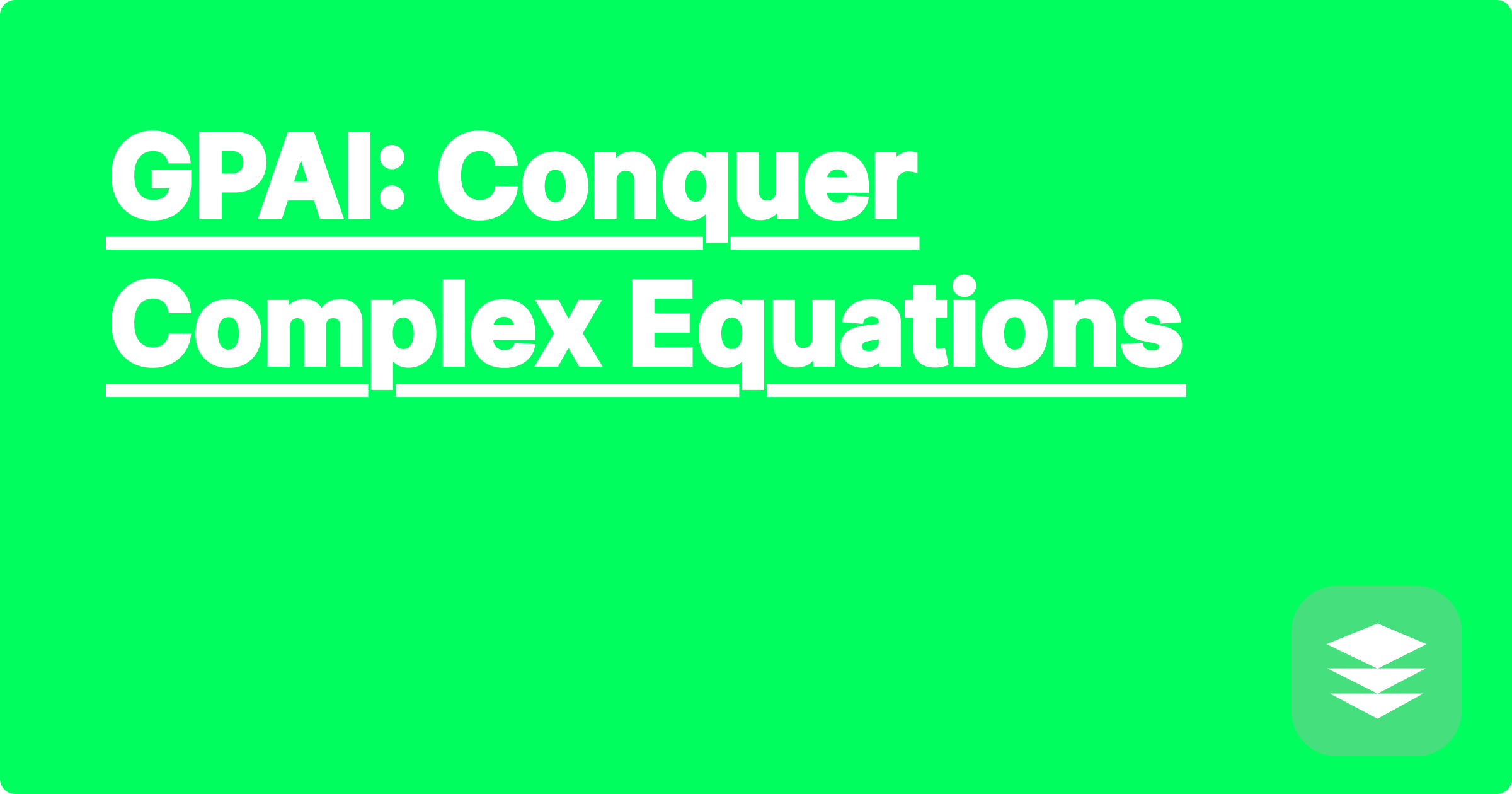
The world of STEM is a thrilling landscape of complex equations, intricate models, and data-driven discoveries. However, navigating this landscape can often feel overwhelming, especially when grappling with dense theoretical concepts and challenging problem sets. The sheer volume of information and the difficulty of some concepts can leave even the most dedicated students feeling lost and discouraged. But what if there was a way to not just survive, but thrive in this demanding field? Enter the power of Artificial Intelligence. AI is no longer a futuristic fantasy; it's a present-day tool that can revolutionize the way STEM students learn, research, and conquer complex equations.
For STEM students and researchers, time is a precious commodity. Balancing coursework, research projects, and personal life can feel like a constant juggling act. The ability to learn efficiently and effectively is not just a desirable skill; it's a necessity. AI-powered tools offer a unique opportunity to streamline the learning process, personalize the educational experience, and ultimately empower students to reach their full potential. This isn't about replacing human intellect; it's about augmenting it with the power of intelligent machines. Think of it as having a personalized tutor available 24/7, ready to help you break down complex concepts, identify your weaknesses, and guide you towards mastery.
STEM fields are built on a foundation of mathematical principles, often expressed through complex equations. These equations can range from relatively simple algebraic expressions to intricate differential equations and multi-variable calculus. Understanding these equations is not just about memorizing formulas; it's about grasping the underlying concepts and applying them to real-world problems. This requires a deep understanding of the mathematical language, the ability to manipulate symbols, and the capacity to visualize abstract concepts. For many students, this can be a significant hurdle, leading to frustration, decreased motivation, and ultimately, a sense of inadequacy. The traditional learning methods, while valuable, often fall short in providing the personalized support and adaptive feedback that many students require to truly master these complex concepts.
Imagine having a personalized AI tutor that can guide you through the intricacies of any equation. This is the promise of platforms like GPAI (a hypothetical AI learning platform – consider Wolfram Alpha, Symbolab, or other similar tools as real-world examples). GPAI can analyze complex equations, break them down into manageable steps, and provide detailed explanations for each step. It can also generate practice problems tailored to your specific weaknesses, ensuring that you focus your efforts where they are needed most. Beyond GPAI, tools like ChatGPT and Claude can assist with understanding the theoretical background behind the equations, providing contextual information and answering your questions in a conversational manner. Wolfram Alpha excels at computational tasks, allowing you to quickly solve complex equations, visualize data, and explore different scenarios.
Let's walk through a hypothetical example. Suppose you're struggling with a partial differential equation in your fluid dynamics course. You can input the equation into GPAI, which will then dissect it, identifying the type of equation, the variables involved, and the boundary conditions. GPAI can then provide a step-by-step solution, explaining the mathematical principles applied at each stage. If you're still confused about a specific step, you can use ChatGPT or Claude to ask clarifying questions. For instance, you could ask, "Can you explain the concept of boundary conditions in simpler terms?" or "How does this equation relate to the Navier-Stokes equations?" These AI tools can provide you with the conceptual understanding you need to move forward. Finally, you can use Wolfram Alpha to verify your solution, explore different parameter values, and visualize the results.
Consider a chemical engineering student working on a reaction kinetics problem. They encounter a complex rate equation involving multiple reactants and products. Using GPAI, they can input the equation and receive a step-by-step solution, along with explanations of the underlying principles like the law of mass action and the Arrhenius equation. They can then use Wolfram Alpha to plot the reaction rate as a function of temperature and concentration, gaining a deeper understanding of the reaction dynamics. Or imagine a physics student grappling with Maxwell's equations. They can use ChatGPT to understand the theoretical underpinnings of electromagnetism and then use GPAI to solve specific problems involving electric and magnetic fields. These examples illustrate how AI tools can be seamlessly integrated into the learning process, providing personalized support and enhancing understanding.
Integrating AI tools into your workflow requires a strategic approach. Don't rely solely on AI to solve every problem. Instead, use these tools to enhance your understanding, identify your weaknesses, and accelerate your learning. Start by identifying the specific areas where you struggle. Are you having trouble with the theoretical concepts, the mathematical manipulations, or the application of the equations? Once you've pinpointed your weaknesses, you can choose the appropriate AI tool to address them. Remember that active learning is key. Don't just passively consume the information provided by the AI. Engage with it, ask questions, and try to solve the problems yourself before looking at the solutions. Finally, integrate these tools into your time management strategy. Use them to optimize your study sessions, focusing on the areas where you need the most help.
In conclusion, AI tools offer a powerful new paradigm for STEM education and research. By embracing these tools and integrating them strategically into your workflow, you can conquer complex equations, deepen your understanding of fundamental concepts, and ultimately achieve academic success. Don't be afraid to experiment with different platforms and find the tools that best suit your learning style. The future of STEM learning is here, and it's powered by AI. Start exploring these tools today and unlock your full potential. The journey through the complex world of STEM can be challenging, but with the right tools and strategies, it can also be incredibly rewarding.